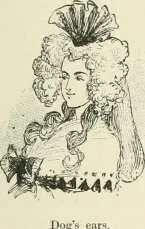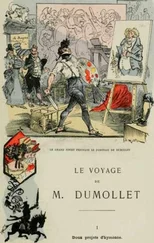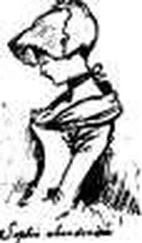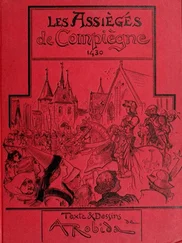Albert Robida - Yester-year; ten centuries of toilette from the French of A. Robida
Здесь есть возможность читать онлайн «Albert Robida - Yester-year; ten centuries of toilette from the French of A. Robida» весь текст электронной книги совершенно бесплатно (целиком полную версию без сокращений). В некоторых случаях можно слушать аудио, скачать через торрент в формате fb2 и присутствует краткое содержание. Жанр: Старинная литература, на английском языке. Описание произведения, (предисловие) а так же отзывы посетителей доступны на портале библиотеки ЛибКат.
- Название:Yester-year; ten centuries of toilette from the French of A. Robida
- Автор:
- Жанр:
- Год:неизвестен
- ISBN:нет данных
- Рейтинг книги:4 / 5. Голосов: 1
-
Избранное:Добавить в избранное
- Отзывы:
-
Ваша оценка:
- 80
- 1
- 2
- 3
- 4
- 5
Yester-year; ten centuries of toilette from the French of A. Robida: краткое содержание, описание и аннотация
Предлагаем к чтению аннотацию, описание, краткое содержание или предисловие (зависит от того, что написал сам автор книги «Yester-year; ten centuries of toilette from the French of A. Robida»). Если вы не нашли необходимую информацию о книге — напишите в комментариях, мы постараемся отыскать её.
Yester-year; ten centuries of toilette from the French of A. Robida — читать онлайн бесплатно полную книгу (весь текст) целиком
Ниже представлен текст книги, разбитый по страницам. Система сохранения места последней прочитанной страницы, позволяет с удобством читать онлайн бесплатно книгу «Yester-year; ten centuries of toilette from the French of A. Robida», без необходимости каждый раз заново искать на чём Вы остановились. Поставьте закладку, и сможете в любой момент перейти на страницу, на которой закончили чтение.
Интервал:
Закладка:
The change that set in during the last peaceful years of Louis Seize gathered speed and character. Fashion had struck into a new path, and little by little all the characteristics of the former time, the old régime, as it is called, disappeared.
In the famous print by Debucourt, La Promenade picllique, which gives us a vivid vision of a crowd of fine folk in the early days of the Revolution, what remains of the costumes and modes of the century among that charming assemblaoe of belles and beaux, who seem wholly unconcerned with the great drama ? Powder, a few shovel-hats on the heads of a few old men, who lag behind the time, and that is all.
The aspect of women was strangely altered. English fashions prevailed at first, that is to say waistcoats and riding-habits were worn, but afterwards gowns became more simple, both in make and material.
Times were hard, good-bye to rich tissues, to silks and satins, to the costly gear of former days. Cotton, Indian print, and lawn replaced silk, and dressmakers adhered to straight lines with little ornament and few accessories. Lawn bodices were made chemise-wise, leaving the arm bare from the elbow, skirts were plain, almost flat, and had long saslies. This extreme simplicity was relieved by the national colours, trophies, and revolutionary symbols, imprinted on the stuff, or a scanty frill was added to the edge of the skirt.
Large muslin fichus were still worn, and on great occasions the costume was completed by a bunch of tricolored flowers placed on the left side above the heart, and by patriotic trinkets, neck-lockets, waist-buckles, in steel or copper, cockades, earrings, buttons ' à la Bastille,' ' au Tiers-État,' ' à la Constitution,' &c. For a while everything was ' à la Bastille,' even the hats.
The large cone-shaped hats with wide brims, and over-laden with ribbons, after having tried to hold out for some time, disappeared ; then came a spell of caps only—caps with great puffed and be-ribboned crowns, caps like the head-tires of the women of Caux in Normandy, especially the ' peasant ' and ' milkmaid ' caps and the graceful coif with wide lace borders.

MERVEFLLEUSE EX TUXiaUE A LA GRECaCE.
which we now call the ' Charlotte Corday cap,' mounting a large tricolour cockade.
Hardly any white powder was used—so much black was about to be consumed— the hair was worn as it grew, with a little added, but white wigs were just 'coming in.'

Soon, however, the tempest broke out in earnest. The Terror had begun. Could there be any further question of luxury, frivolity and fashion ? The ranks of fine ladies were thinned, they were in the Abbaye, in La Force, in a hundred prisons, or at Coblentz ;—they were in hiding, or they were dead.
The extreme simplicity affected by everybody, either from motives of prudence, or because it was impossible to care about dress at such a time, did not always suffice to avert the appellation of * suspect,' which was a sure passport to the scaffold, Talleyrand said that those who had not lived in the old society of former times did not know the sweetness of living. In '93, the problem was to live, no matter in what seclusion, like a mouse in a hole, if necessary. Under this gentle reign of Liberty, the law ordained that a placard should be placed on every house, setting forth the names of all the inhabitants, and even their ages ; this was a hard enactment. Many harmless people who had known bright and happy days endeavoured to shut out the mutterings of the storm, the tumult of the streets, and the horrible clamour of clubs and newspapers, in obscure apartments in silent and sleepy streets. Nevertheless, a small group yet hoisted the standard of dress in the face of the Sans-culottes. These brave men and women still displayed elegant attire, at the Palais-Royal, on the boulevards, at the prome-

The Hussar hat.
nades, and at such of the theatres as remained open, braving the citizens in carmagnoles and red caps, and the knitting hags of the guillotine. But, at how great a risk was this done ! Fashion did not dare to struggle any longer, the poor thing hid its head under its wing, and hoped for a better day.
The guillotine was always at work, interrupted only from time to time by some idyllic festival, tlie fete of the Supreme Being, of Agriculture, or of Old Age, with rows of young girls in white, goddesses of Liberty, choruses of old men and boys, charming pastorals, spectacles which sweetly stirred the hearts of the good Marat and the sensitive Robespierre. Sand was strewn over the blood for the day, on the morrow the red stream beç»;an to run acjain.
Ninth Thermidor ! For love of Citizeness Thérèse Cabarrus, a star about to rise, Tallien had braved death, then hanging over every head. He had defeated Robespierre, and flung him in his turn into the impassive arms of the goddess Guillotine.
Mme. Tallien became Notre-Dame de Thermidor, she who saves by the sovereign power of beauty !
A deep sigh of relief was heaved by all France, and immediately the repressed antl terrorized powers lifted up their heads ; forth came dress and fashion, with luxury, with frivolity, and even folly, with gladness, and laughter. Yes, there was a frantic longing for laughter after so much blood and weeping.
The ' Incroyables,' and the ' Merveilleuses,' who had already appeared before the Terror, displayed themselves in crowds on the promenades and boulevards, and Fashion, whose head had no doubt been turned by the Kobespierre régime, though still pale with fear, began at once to revel in countless follies.
While the fops belonging to the 'gilded youth ' of Paris, and appropriately called ' Incroyables,' with their high-collared coats, their huge cravats and the twisted sticks that were so necessary for their defence against Jacobins and terrorist sectionaries, imitated English fashions, the ' Merveilleuses ' were unanimous in the worship of antiquity. For some years there were no more Parisians, all the women were Greek and Roman.
Straight gowns without waists, mere sheaths bound around the bosom by a girdle, short in front to let the foot be seen, slightly trained at the back, such was the attire of the ' Merveilleuses.' Nothing but antiquity was known; everything had begun over again.
During the Terror, modesty had been forgotten ; this Athenian costume was merely a second chemise, and might have passed, but for the jewellery that was worn with it, for a symbol of the poverty of that time of ruin, when the louis d'or was worth eight hundred livres in assignats. It was a tunic of transparent lawn, which clung to the wearer's body with each movement. In addition to this, the diaphanous tunics of the leaders of fashion were slit down the sides from the hips.
Notre-Dame de Thermidor, Thérèse Cabarrus, now Citizeness Tallien, the Queen of Fashion, appeared at Frascati, dressed, or, rather, undressed, in the classic style \ her Athenian cjown showed her IcsTS clad in flesli-coloured tights with golden circlets for garters,

antique buskins, and rings on each toe of her statue-like foot.
In the salons, in the summer-gardens at the promenades, the only wear was this antique gown, open above and below, worn with ' Carthaginian ' chemises, or even without any chemise at ail, sandals and buskins fastened by narroAv red bands, gold circlets set with precious stones, ' arrangements ' of tunics and peplums, corset-belts a couple of inches wide close under the bosom and adorned with brilliants.
Читать дальшеИнтервал:
Закладка:
Похожие книги на «Yester-year; ten centuries of toilette from the French of A. Robida»
Представляем Вашему вниманию похожие книги на «Yester-year; ten centuries of toilette from the French of A. Robida» списком для выбора. Мы отобрали схожую по названию и смыслу литературу в надежде предоставить читателям больше вариантов отыскать новые, интересные, ещё непрочитанные произведения.
Обсуждение, отзывы о книге «Yester-year; ten centuries of toilette from the French of A. Robida» и просто собственные мнения читателей. Оставьте ваши комментарии, напишите, что Вы думаете о произведении, его смысле или главных героях. Укажите что конкретно понравилось, а что нет, и почему Вы так считаете.












